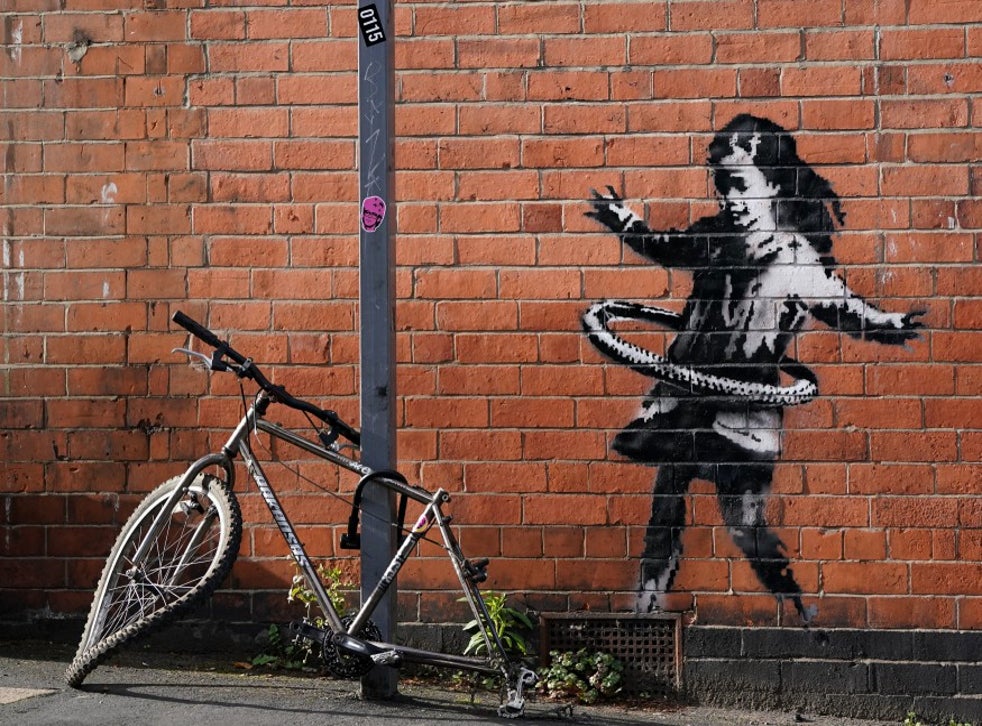Banksy’s latest, an image of a girl hula-hooping, has recently appeared on the side of a beauty salon in Nottingham. For the time being, the council has placed perspex over the piece in an effort to protect it. There is also conversation happening as to how it might be extracted (taking the wall with it, inevitably) for a museum or gallery. The age-old debate as to where a Banksy should belong has resurfaced.
Part of the reason why there is no simple answer is due to how Banksy problematizes the associations of a gallery or museum space, as well as the idea of graffiti being a “lesser” art form.
Banksy’s choice to work primarily with graffiti is significant. Graffiti is often dismissed as “not art”, or as only good for being cleaned off. It is, in many cases, a criminal offence. It is also purposefully public and accessible. Hypocrisy lies in all of these associations when a Bansky pops up and everybody scrambles to claim it.

Some might argue that a Banksy is different from “normal” graffiti because it presents socially and politically charged messages that disrupt the connotations of graffiti. However, there is a problematic valuing system at work here that is often unacknowledged. The belief that graffiti gains purpose through presenting an easily-identifiable social or political message creates a double-standard that much other art (see: Rothko’s colour field paintings) hasn’t been held up to. Herein lies the central issue; the boundaries of what “art” is and is not are being constantly drawn and re-drawn by a very limited artistic consensus. The problems with this consensus are reflected in a gallery or museum space. We go to an art gallery or museum with the assumption that what is in there is important, regardless of whether we see value or meaning in the works. We often ignore, however, who has put the artwork there or deemed it as “worthy”. The problems with the consensus that has informed the works in a gallery, and contributed to the sanctity of that space, are numerous. Firstly, as discussed, the choices of art included are often informed by very arbitrary values that help preserve a select few’s cultural monopolies. Secondly, increasing awareness of the role of colonialism in museumification points out the theft of objects from different cultures. We can see how a clear intersection is formed between these colonial tensions and the “othering” of most of us – who acutely feel the invisible limits around art when we are taught we don’t “get it” – to form an inherently elitist space.

Banksy’s acceptance as a *legitimate* artist, therefore, points out dangerous inconsistencies. Namely, it helps confirm the self-selected bounds of the art world – particularly when the rest of graffiti is still discriminated against. Taking his works into a gallery space simply reinforces the elitist forces that shape our valuing structures of art. Significantly, it also ignores the intentionally public power of graffiti to sidestep the issues inherent in the art world’s consensus and in gallery spaces. Graffiti should be kept communal. Banksys should be left on their walls.
It remains to be seen, now that Banksy has surely realised his status in the art world, whether he is appropriating the connotations of graffiti without paying homage to them. Aside from Banksy, however, there is still a lot more work to be done in challenging the valuing processes, and double standards, surrounding graffiti. Acknowledging how graffiti calls for a more radical reconstruction of gallery spaces, and a reconfiguring of the art world’s values may be a good place to start.
Image Credit: The Nottingham Post

